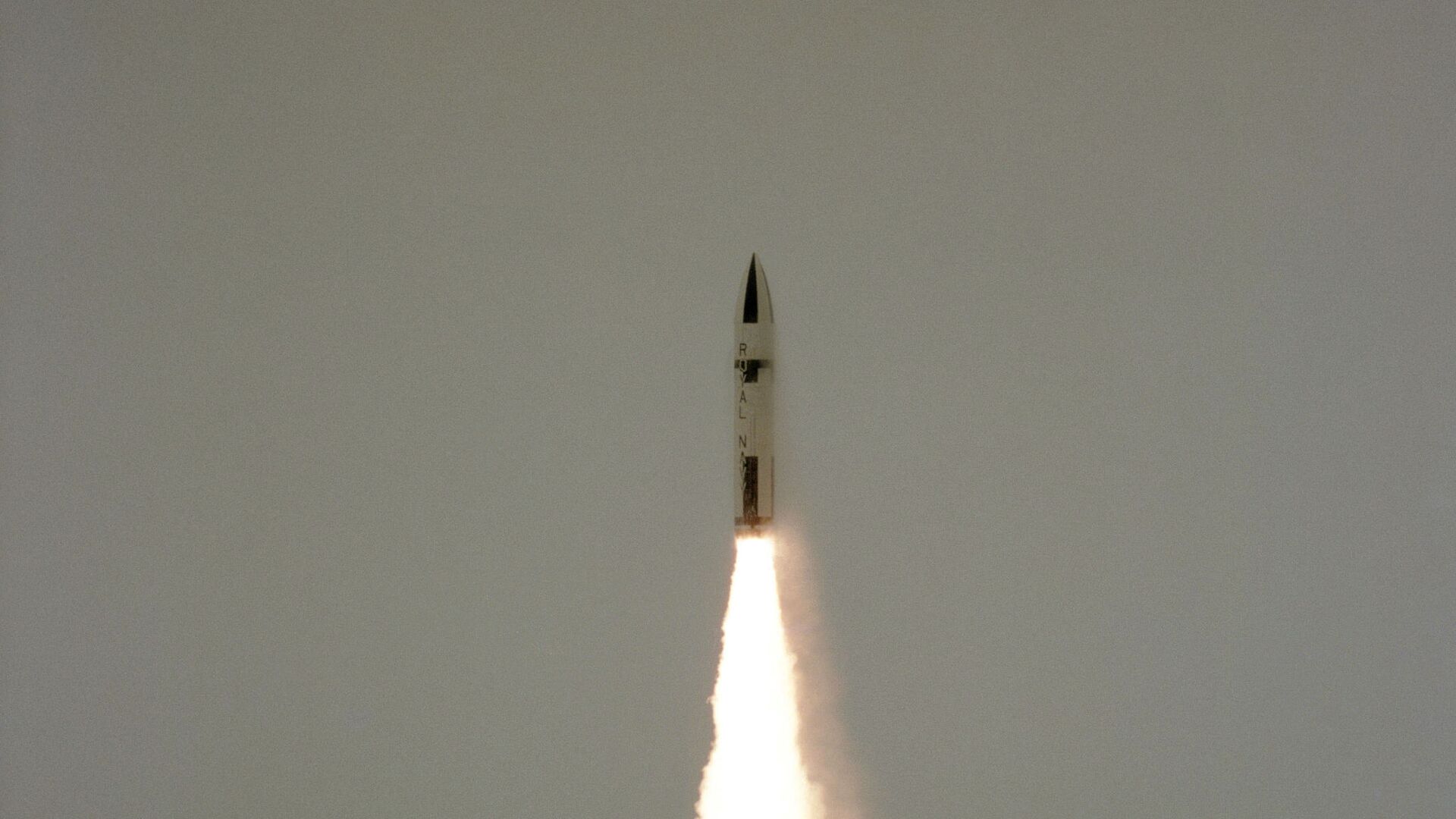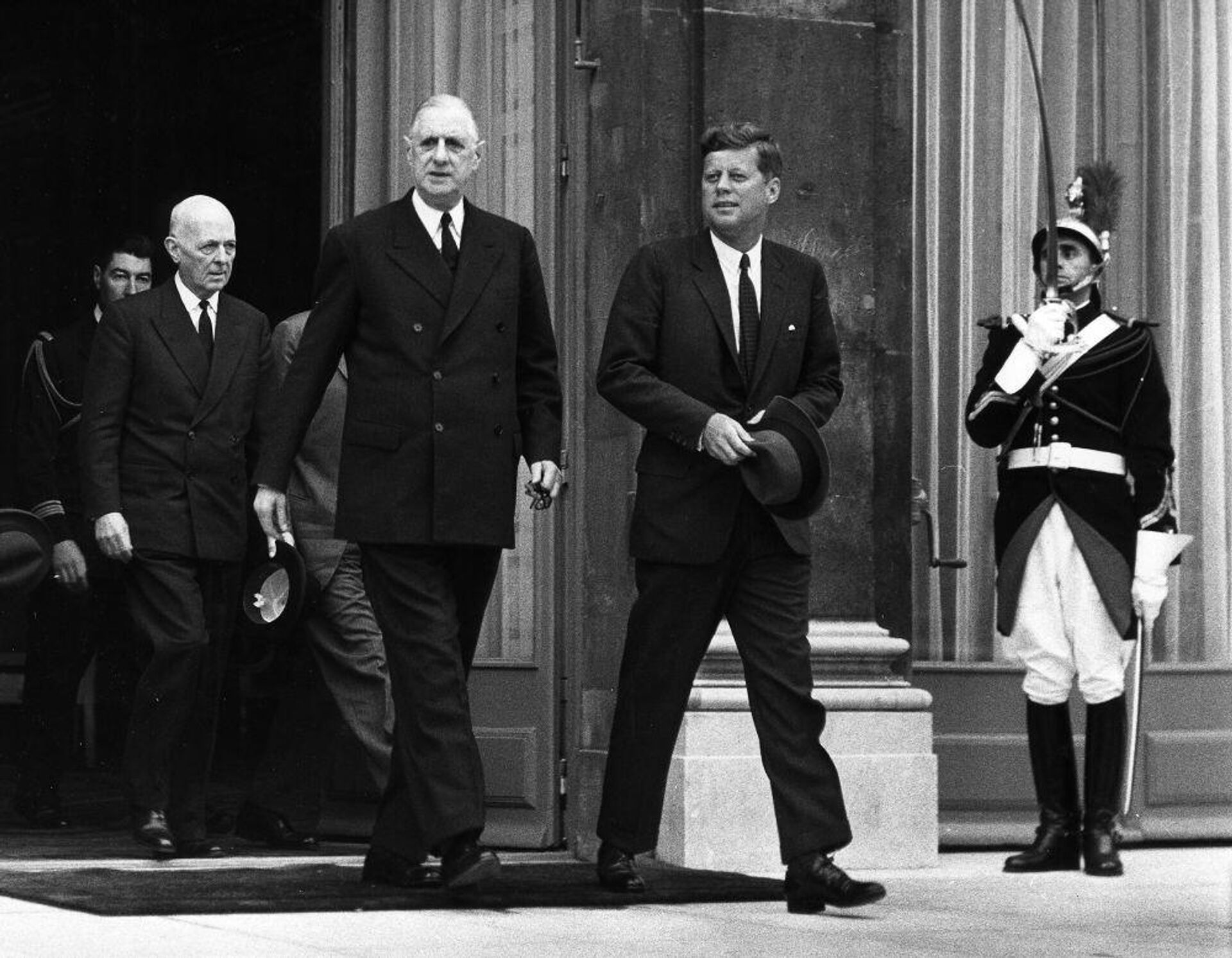The Last Time the US Gave an Ally Nuclear Technology, France Tried to Quit NATO
01:39 GMT 18.09.2021 (Updated: 15:15 GMT 28.05.2023)

CC0 / /
Subscribe
On Friday, France cried foul after being left out of a new trilateral defense pact between the US, UK and Australia, resulting in Canberra cancelling a deal to buy French submarines in favor of nuclear-powered subs sold by Washington. But this isn’t the first showdown between France and its allies over nuclear weapons.
American, British and Australian leaders announced the important new AUKUS security treaty on Wednesday, aimed at confronting China while complementing other security arrangements between the three nations. Left out of the pact, however, and given short notice about its announcement, French Foreign Minister Jean-Yves Le Drian denounced the move as “a stab in the back.”
“I don't see how we can trust our Australian partners," said Clement Beaune, France's European Affairs Minister, suggesting it would endanger ongoing trade talks between Australia and the European Union.
As a result of the deal, Australia cancelled a $90 billion contract with France’s Naval Group to buy a dozen Barracuda-class submarines modified to run on conventional diesel fuel instead of nuclear power. Instead, Australia will build its own nuclear-powered attack subs, likely a licensed version of an American or British design. As Australia has no nuclear program of any kind, including for nuclear power plants, such technology would have to be given or lent to the Oceanic nation - an enormous change in the balance of power, considering both US and UK subs are fueled by weapons-grade uranium.
However, Australian Prime Minister Scott Morrison said Wednesday that his country still did not have an ambition to acquire nuclear weapons.
In its latest move on Friday evening, Paris withdrew its ambassadors to the US and Australia for consultation, prompting outcry in both nations.
This isn’t the first time France voiced serious concern about Americans giving away nuclear technology or having power over another nation’s nuclear abilities. In the 1960s, it threatened the core of the NATO alliance.
The Skybolt Crisis
In the early years of the Cold War, the primary method of striking a target with a nuclear weapon was gravity bombs dropped by heavy bombers from high altitude. While missiles had been developed, the globe-spanning intercontinental ballistic missiles (ICBMs) and their submarine-launched cousins (SLBMs) were still in their infancy, and most nations did not have them.
Short on land on which to hide a slew of ICBM silos, the UK instead looked toward perfecting air-launched ballistic missiles (ALBMs) carried by its Vulcan bombers to fire nuclear weapons at the Soviet Union and its allies. However, as its own efforts in the Blue Steel program had failed to yield a useful weapon, London looked to buy the US-designed Skybolt missile, which had a much longer range, as the platform on which to base its entire nuclear arsenal.
As costs for the Skybolt program rose, the incoming Kennedy administration in Washington became skeptical of the program and found the new Polaris SLBMs better in every way. Central administration figures also became skeptical of the value a separate British nuclear arsenal, and whether it would be an asset in a strategic showdown with the USSR. Many did not trust London to behave responsibly with nuclear weapons in the aftermath of the 1956 Suez Crisis, which it undertook with Paris and Tel Aviv but without Washington’s knowledge.
“We don't think that we are going to get $2.5 billion worth of national security” out of the Skybolt program, President John F. Kennedy told a reporter in December 1962.
Even more bluntly, Kennedy's Secretary of State, Dean Acheson, said days earlier that "Britain's attempt to play a separate power role - that is, a role apart from Europe, a role based on a 'special relationship' with the United States, a role based on being the head of a Commonwealth which has no political structure or unity or strength and enjoys a fragile and precarious economic relationship - this role is about played out.”
The attitude provoked a crisis in London that threatened to collapse the Conservative government under UK Prime Minister Harold MacMillan, which would find itself with extensive nuclear weapons it couldn’t use and a crumbling empire it couldn’t defend. The end of MacMillan’s government would be the end of London’s hopes to join the European Economic Community, a burgeoning trade pact that would later serve as the basis for the European Union.
To resolve this, American and British leaders met in the Bahamas and hammered out a deal by which they created a NATO multilateral nuclear force. British warheads would be fitted on American Polaris missiles and placed on British Resolution-class submarines, and London would only be able to use them separately in the event of a national crisis. Thus, ultimate control over British nuclear forces was held by Washington, not by London.
De Gaulle Rebels
The following year, French President Charles de Gaulle vetoed the British application to join the EEC, citing British dependence on the US. The nationalist leader had long had suspicions about London’s desire to join, seeing British and French economic interests as “incompatible” in the postwar era and that Britain had a “deep-seated hostility” to the European project.

US President John F. Kennedy and French President Charles De Gaulle at the conclusion of their talks at Elysee Palace, Paris, France, on June 2, 1961.
De Gaulle wasn’t just skeptical of US or UK commitment to French interests. He was also reportedly skeptical of the NATO alliance as a whole, seeing its joint military structure as an imposition on French sovereignty. A nuclear power, De Gaulle demanded France be given equal say in alliance strategy, just as the US and the UK. When this was rejected, he announced in 1966 that France was pulling out of the joint military structure and ordered all foreign forces to leave the country. As a result, NATO headquarters is today in Brussels, Belgium.
That same year, De Gaulle came into conflict with the other EEC members over what he saw as more encroachments on French sovereignty and he boycotted the European Commission for several months in what was called the “empty chair crisis,” the resolution of which gave de facto veto power to every state on issues judged to be of great national interest.
Paris didn’t totally divorce the North Atlantic Alliance and signed separate defense assurances pledging its unity with NATO in the event of a nuclear war with the Soviet Union, but it took 43 years for the wound to be fully healed. France only rejoined the joint command structure under President Nicolas Sarkozy in 2009, long after the Cold War had ended.

